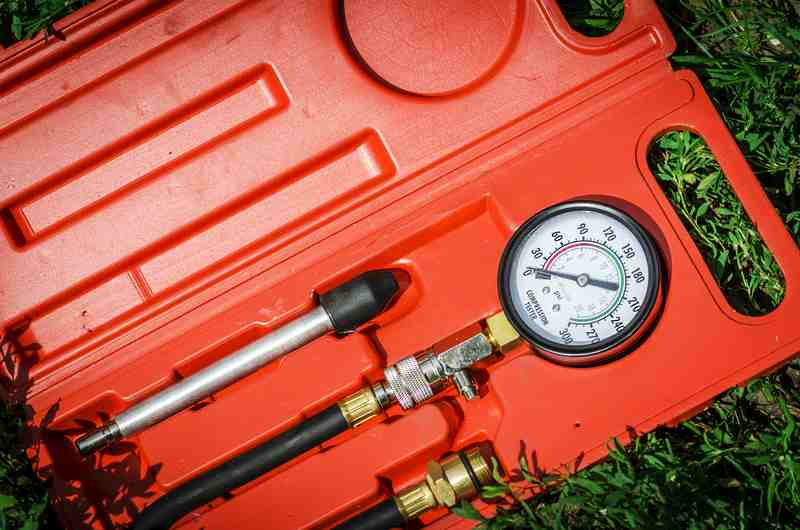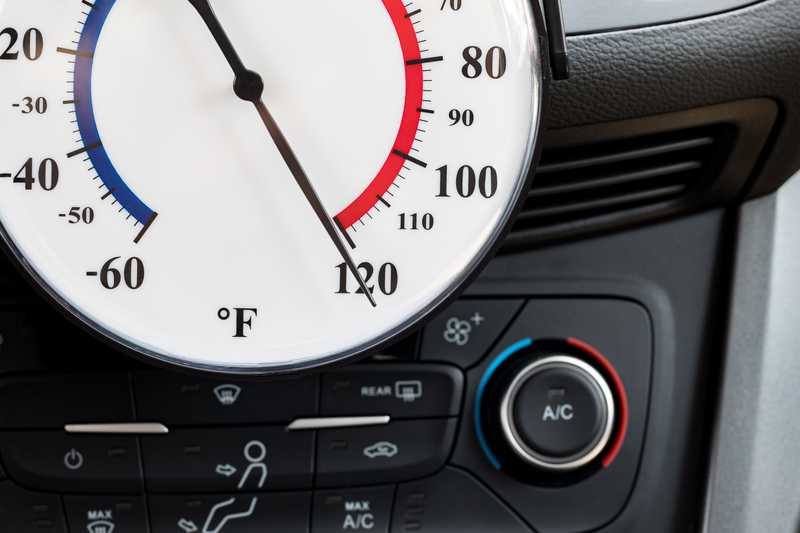
The ignition coils are designed to work as a transformer as they are responsible for transforming electrical energy into high voltage and save it for some time before the voltage is released to the spark plug.
The ignition coils are usually integrated into garden trimmers and leaf blowers and the Ryobi ignition coils are known for their quality. However, there are times when the ignition coil stops working, which results in functionality issues in the equipment. So, let’s see how you can test the ignition coil!
Ryobi Ignition Coil Test
- Using The Multimeter
The ignition coil can be checked with the help of a multimeter. To test the ignition coil, you’ve to remove the top covering and disconnect the wire that’s connected to the Ryobi ignition coil.
In addition, you’ve to disconnect the ignition wire cable that’s connected to the spark plug and take out the screws that connect the ignition coil to the equipment’s motor. As a result, you will be able to take out the ignition coil.
Once the ignition coil has been removed, take out the user manual and test the coils with the help of a multimeter and see if the values are similar to the ones mentioned in the manual.
In case the readings are accurate or have a minor difference, the ignition coil doesn’t have any issue and it’s recommended that you check the spark plug’s connection to the wire if the equipment isn’t working. On the other hand, if the reading is significantly low, the ignition coil is damaged and should be replaced.
In case you don’t know how to test the ignition coils, it’s recommended that you hire a mechanic as they can use the digital multimeter to test the resistance in primary as well as second circuits.
In fact, diagnosing issues with your ignition coils requires multiple tools and equipment and a minor mistake can damage the spark plugs severely. For this reason, it’s best that you hire a mechanic for diagnosis as well as replacement if needed.
- Using The Ignition System Tester
An ignition system tester is the most convenient way of testing the ignition coils. These testers are available at local hardware stores and are beginner-friendly. In addition, they are affordable.
To use the ignition system tester, you have to connect it between the motor and spark plug boot and pull the starter cord (you basically have to turn on the Ryobi tool).
Once it turns on, you need to look out for a spark in the window of the tester – a weak spark indicates an issue with the ignition coils. However, if the spark is strong but you still have issues using the ignition coils, it’s recommended that you re-gap or clean the spark plug.
Common Signs Of A Damaged Ignition Coil
In addition to checking the ignition coil with a multimeter, there are many other symptoms that indicate a damaged ignition coil, such as;
- Backfiring
If your equipment is constantly backfiring, it indicates an issue with the ignition coil – the early stages of ignition coil failure are the most common reason behind backfiring. In particular, backfiring happens when the unused power charge passes through the exhaust pipe.
The backfiring is often combined with the emission of black smoke coming from the exhaust pipe. In addition to these two issues, the smoke will have a fuel-like smell.
- Slow Speed
The second symptom of a damaged ignition coil is the slow speed of the tool. In case you turn on the Ryobi equipment but its speed is slow, it’s likely that the ignition coil is damaged.
This is because slow speed and stalling happen when irregular sparks are sent to the plugs (it happens when the ignition coils are damaged).
- Misfiring
When you turn on the Ryobi equipment but it starts misfiring, it indicates an issue with the coils – misfiring is usually associated with sounds like sputtering noise and coughing.
In addition to this, using the equipment at a full speed will result in spitting and jerking as well. Moreover, the tool will vibrate more intensely when the ignition coil is failed.
- Hard To Use
If the tool is designed with a power button, it’s needless to say that turning it on is convenient. However, if you press the power button but the tool doesn’t turn on, it simply means that the ignition coil has malfunctioned.
In many cases, the tool turns on but since the ignition coil won’t be able to send the sparks, it will turn off immediately.
Common Reasons Behind A Damaged Ignition Coils
There are various reasons behind the failure of ignition coils even though they aren’t considered to be the wearing items. In the majority of cases, using the tools at high temperatures and using them for too long leads to the failure of internal parts.
For this reason, the experts recommend that you give regular breaks to your tools while using them to make sure the internal parts aren’t used beyond their capacity.
The second potential reason behind failed ignition coils is moisture damage. In particular, if the tool was used in rain or you spilled some water on it, it could cause the ignition coil issue.
So, always use it on dry surfaces and keep it away from moisture. In addition to the failure of ignition coils, moisture can also cause corrosion of internal parts.
Last but not least, the worn-out spark plugs can also cause issues with the ignition coils. That’s because the damaged sparked plugs put more stress on the coils and cause premature failure.
In particular, the spark plug gap increases when the spark plugs wear out, which means the ignition coil will have to provide higher voltages to compensate for the gap. So, when the ignition coil has to produce high voltage repetitively, it will cause coil failure.
For this reason, it’s recommended that you replace the damaged ignition coils as soon as possible and an auto mechanic will be able to help you out.
Keep in mind that if you don’t change the ignition coil on time, Ryobi tools will operate poorly because they will lack power. In addition, using the misfiring and jerking tool can cause damage to the catalytic converters.
In simpler words, if the test and symptoms show that the ignition coil is damaged, you must replace it as soon as possible to ensure the tool works optimally and other parts aren’t damaged either.
Replacing The Damaged Ignition Coils
The ignition coils can be replaced by a mechanic, but since these coils work together with spark plugs, it’s recommended that you replace the spark plugs as well.
That’s because spark plugs are the most common components that are used in conjunction with ignition coils and worn-out spark plugs can result in an unnecessary load on coils. Having said that, if the coils were damaged because of a worn-out spark plug, a spark plug should be replaced.
On the other hand, if you’ve to replace the ignition coils due to other reasons like maintenance work, you won’t have to replace the spark plugs. However, when you replace the ignition coils, you must replace the wires connected to them, especially if they are damaged, old, or worn out.
The new ignition coils can be purchased from the electronics store, or if the equipment is under warranty, you can call Ryobi for a replacement.
The Bottom Line
Ryobi has an exceptional range of tools and equipment for gardening and other projects. The company has used advanced components and top-notch batteries for these tools but they are still susceptible to aging-related issues or these issues can arise due to insufficient maintenance.
For this reason, it’s recommended that you keep the tools clean and serviced. As far as the ignition coils are concerned, they are affordable to replace, so make sure they are replaced immediately to prevent damage to other parts of the tool.







A resistance check is not absolute. A Ryobi ignition module/coil also has a Darlington transistor within the confines of the module. This transistor is more suspect to going bad than one of the winding’s of a coil. If the transistor goes bad it will greatly reduces the spark to a point where the device won’t have enough spark to start the engine at lower cranking RPM’s. Bottom line a resistance check WILL NOT show this Transistor to be bad.
So what are the factory readings ?…. I don’t have a manual…..
I have the same question. What are the factory specs for the ignition module in my Ryobi blower?